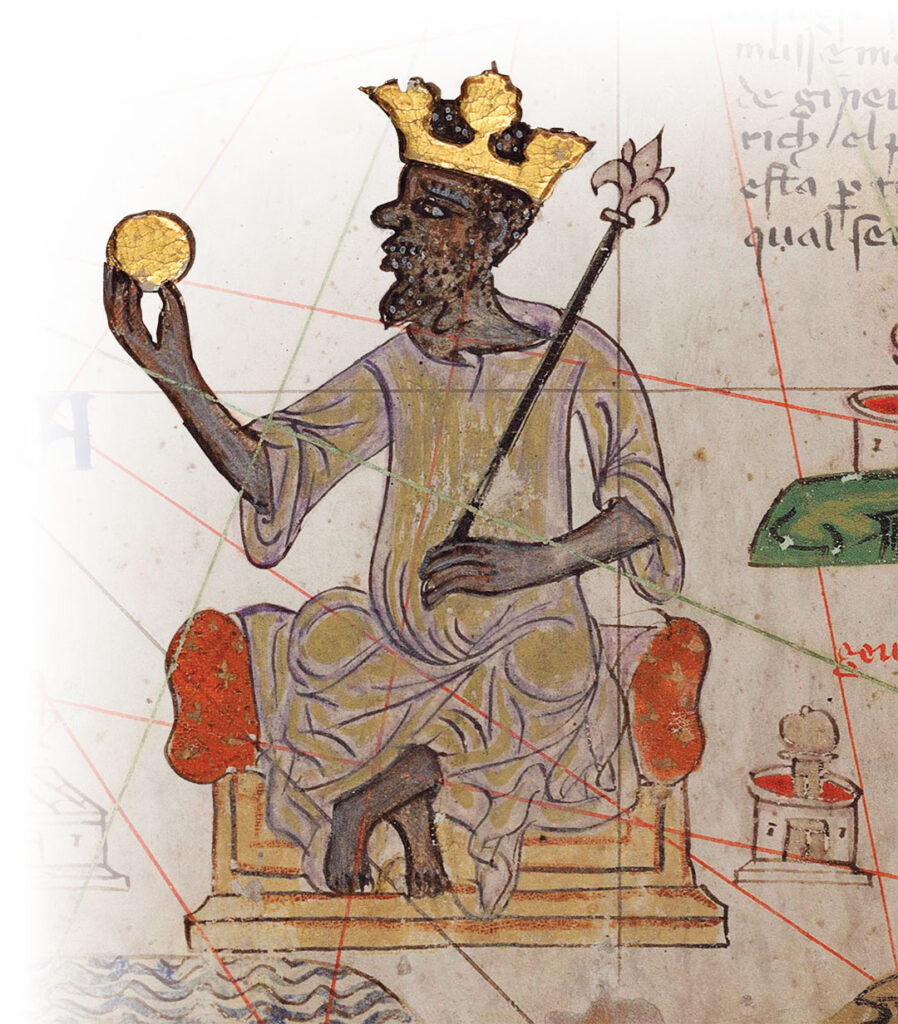ADF STAFF
The Hajj, the annual Islamic pilgrimage to Mecca in Saudi Arabia, dates to the seventh century, the time of the Prophet Muhammad. But Muslims believe the pilgrimage dates back thousands of years earlier, to the time of Abraham.
All able-bodied Muslims must make the journey at least once in their lifetime, as long as they are financially able and can continue to support their families during their absence. Financial considerations were not an issue for Mali Empire ruler Mansa Musa in 1324, when he traveled to Mecca in fantastic fashion, bringing along 60,000 subjects and 12,000 slaves, 500 of whom each carried about 3 kilograms of gold.
The caravan also included 80 to 100 camels, each bearing 136 kilograms of gold. The Mansa (emperor) gave away gold wherever he went.
The round trip covered 4,000 miles and took almost two years.
West Africa’s Mandinka people founded the Mali Empire in West Africa between the Niger and Senegal rivers. It endured from 1235 to 1670. At its peak, it included what are now parts or all of Burkina Faso, Chad, The Gambia, Guinea, Mali, Mauritania, Niger, Nigeria and Senegal. It covered 24,000 square kilometers and was one of the largest empires in the world, known for the fabulous wealth of its rulers.
At one time, the Mali Empire had a population of 40 million to 50 million people.
The first ruler of the empire was Sundiata Keita, an exiled prince known as “the hungering lion.” He made his capital at Niani on the Sankarani River, a place rich in gold and iron. That gave him a military advantage — money and the means of making weapons — but he also was lucky when the region experienced many years of dry weather. It reduced the presence of the tsetse fly, which spread diseases lethal to horses and other animals. Without the flies, horse breeders, traders and cavalry spread across the region.
Musa became ruler of the Mali Empire in 1312, taking the throne after his predecessor, Abu-Bakr II, disappeared during a voyage to find the edge of the Atlantic Ocean.
Musa built on the region’s vast natural resources, skilled blacksmiths, favorable weather and military might to make his empire immensely wealthy, perhaps the wealthiest place on earth in its time. In contrast, the areas of the West were struggling with civil wars and hard economic times.
His pilgrimage through Egypt changed its economy, and not for the better. At every turn, Musa spent lavishly and gave away gold. His gifts depreciated the value of gold in Egypt by about 25%, triggering a slump in the economy.
During the pilgrimage, Musa acquired the territory of Gao within the Songhai kingdom, in what is now Mali. It was of great importance to the king. On his return from his pilgrimage, he detoured south to Gao, where he eventually would build mosques and public buildings.
Musa also focused his energies on Timbuktu, building it into a major Islamic university center. He recruited architects and scholars from across the world to Timbuktu, where he commissioned the Djinguereber Mosque. In the more than 500 years since, the mosque has been one of Africa’s most celebrated landmarks.
He is believed to have died sometime between 1332 and 1337, but stories of his wealth and his remarkable pilgrimage live on.
“Imagine as much gold as you think a human being could possess and double it, that’s what all the accounts are trying to communicate,” Rudolph Ware, a historian of West Africa, told Time magazine. “This is the richest guy anyone has ever seen.”

